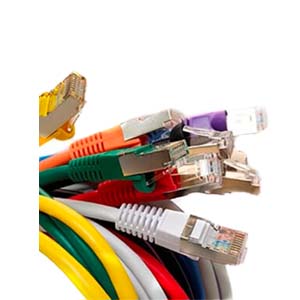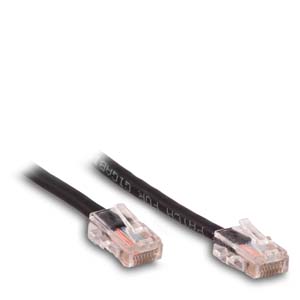Cables Blog
Ethernet Network Cables vs Fiber Optic Cables - Which Should You Buy?
choosing between ethernet cables or fiber optic network patch cables
How do you choose between ethernet and fiber optic network connections?
by Vikas Dayal • February 28, 2023
Cat5e / Cat6 Cables, Custom Cables, Datacomm Cables, Fiber Optic Cables, Network Patch Cables, Network Patch Cords, Patch Finder
Ethernet cords and fiber optic cables both have their pros and cons when you're looking to set up your home or office data network. How do you decide which option is best for you? Whether you're looking for stability vs speed, you have a lot to consider when you're looking to purchase cords or cables for your network connection. Let Cables.com break down some of your choices and help you make your decision.
Home and office data networks have evolved a great deal over the years as technology evolves. What was once considered a high-speed, quality connection ten years ago can now be considered virtually obsolete. So how do you decide what cord or cable will be best for your set up? Let's take a look at some of the choices Cables.com has to offer.
Ethernet Cable Pros and Cons
Today, Category 6 cables are considered the standard when you're looking to set up an ethernet network. This applies to both home or office set ups, whether you're looking to transmit data pertaining to business deals or to play some World of Warcraft.
Cables.com's Cat6 and Cat6A standard ethernet cables offer up to twice the performance speeds of Category5e cables, and are gigabit rated. Our Datacomm cables are available in a variety of configurations, and they're proudly manufactures in the USA. They also work with POE (Power Over Ethernet) Devices without any need for further special cabling.
So what's the benefit of using Cat6 network patch cables? An ethernet cable is a good way to obtain a reliable and secure connection between your office or home network device and the internet. When you're shopping at Cables.com, you have the option of buying Bootless Cat6 Patch Cables that can fit snugly in all receptacles for all applications, including high density network switches. Our Category 6 cables are rated for up to 550Mhz, fast enough for gigabit applications, and are made up of 4 pairs of 24 AWG High Quality 100% bare copper wire. They feature 50 Micron gold plated RJ45 Plugs.
You can also buy Cat6 Patch Cables with flexible Snagless Boots, which offer the same connection speeds as the bootless versions while allowing for some movement in areas facing more traffic.

If you need a lot of cable for a large network, you have the option of buying in multipacks of 25 or 50, as well as purchasing in bulk.
Though our ethernet cables can be purchased in a shielded or unshielded configuration that will impact how they operate near power cables or in busy environments, the important thing to remember is that they simply won't allow for data transmission that's as fast as fiber optic networks. What you get from an ethernet cable is ease and affordability as opposed to speed. This means they're the more economical option, as they're less expensive and easier to install than a fiber optic connection.
Why Fiber Optic?
As we mentioned earlier, fiber optic networks will run much more quickly than an ethernet network. Under ideal conditions, fiber is able to maintain data speeds more than 100x faster than ethernet connections. That said, you pay for what you get - installing a fiber network is likely to be significantly more expensive than ethernet. Depending on the size and nature of your operation, you might not really need to invest in fiber optic.

Fiber Optic Cables come in Single Mode and Multi Mode Patch cables, all of which contain a fine glass cord inside a PVC or riser-rated jacket. Which should you choose? That depends, again, on the needs of your particular data network. The main draw of single mode fiber optic connections is near unlimited bandwidth, and of course, a lower cost. It's important to note that multimode optical fiber is better for transmission over shorter distances, and less expensive than single mode fiber besides.
How should you decide?
It's a big decision, and you might find yourself needing a little assistance! Cables.com has you covered. Our Quick Patch Finder can help you match a cable to your particular need. And if you've still got questions after that, feel free to Contact Us via our webform or by email at sales@cables.com.
We're always happy to help!
SHOP NOW: Category 6A Network Patch Cables - OS2 Single Mode Patch Cables - OM4 Multi Mode Fiber Optic Cables











